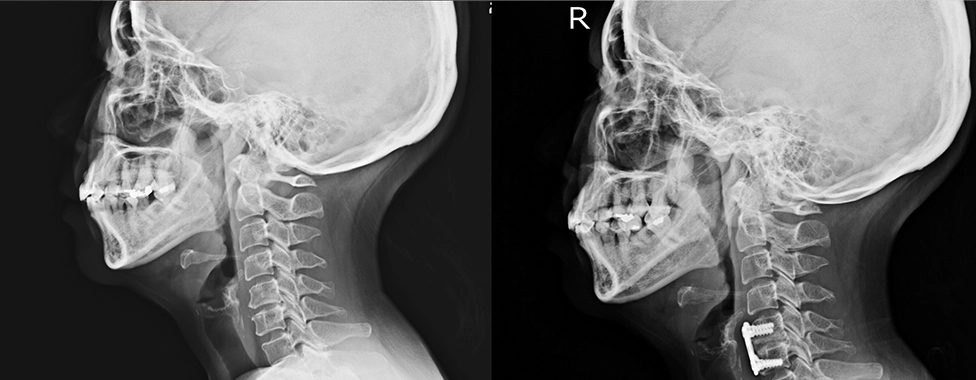Cervical Fusion Q & A
Cervical fusion, also known as cervical surgery or cervical spinal surgery, is a type of surgery designed to alleviate chronic neck pain by joining, or fusing, two or more bones in the neck (cervical spine). There are two main kinds of cervical fusion:
-
Anterior cervical fusion (ACF)
During anterior cervical fusion, your operating team accesses your neck vertebrae by making an incision in the front of your neck. This technique is used when it is necessary to stop motion between a pair of vertebrae or to decompress your spinal cord or nerves by removing a damaged disc. Once the disc is removed, the two vertebrae that were “bookending” the disc are fused together.
This type of cervical fusion works best for degenerative disc disease, herniated discs, and bone spurs. Surgeons usually opt for the anterior approach to avoid disrupting the posterior musculature of the neck, if it is possible to achieve the desired surgical outcome this way.
-
Posterior cervical fusion (PCF)
During posterior cervical fusion, your operating team makes an incision in the back of your neck and adds bone graft to the backside of your cervical vertebrae.
This type of cervical fusion is used to correct cervical spine deformities, such as those caused by kyphosis (a condition that manifests as an excessive outward spinal curve colloquially known as “roundback” or “hunchback”), and to help straighten or stabilize the spine after dislocation or fracture. This technique is also used to stop two vertebrae from grinding against one another.
Cervical fusion procedures are performed using several types of materials, including:
-
Bone graft
Bone grafting is a surgical technique that replaces missing or damaged bones in your spine by transplanting bone material from a bone bank or from elsewhere in your body, such as your hips, legs, or ribs. Sometimes doctors may also use artificial bone graft. During surgery, the graft is placed between adjacent vertebrae, where it stimulates new bone growth and helps the existing bones grow together.
-
Metal implants
Metal implants such as medical screws, rods, and pins, are routinely used in cervical fusion and other types of spinal surgery to stabilize the bones so that they can grow together in the right position.
-
Metal plates
Metal plates are a type of implants, typically made of titanium, used to accelerate the cervical fusion process and in some cases reduce the need for external neck braces after surgery. They are used in combination with metal implants.
Candidates for cervical fusion surgery include those who have:
- Misaligned vertebrae
- An injury that destabilizes the neck
- A herniated cervical disc
Cervical fusion may also work well for patients who have recently received treatment for spinal stenosis, scoliosis, degenerative disc disease, or arthritis damage and need additional support in their spine.
Legacy Brain & Spine offers cervical fusion surgery on an outpatient basis at our three state-of-the-art centers in the Atlanta metropolitan area. If you are seeking world-class surgical care and value the option of being able to go home the same day, start your journey by booking an appointment with one of our specialists online or over the phone.
CONDITIONS
We treat a wide range of brain and spine conditions and diseases.
PREPARATIONS
Learn how to prepare for your surgery at our center
TREATMENTS
We treat a wide range of dysfunction caused by spinal & brain disorders.






